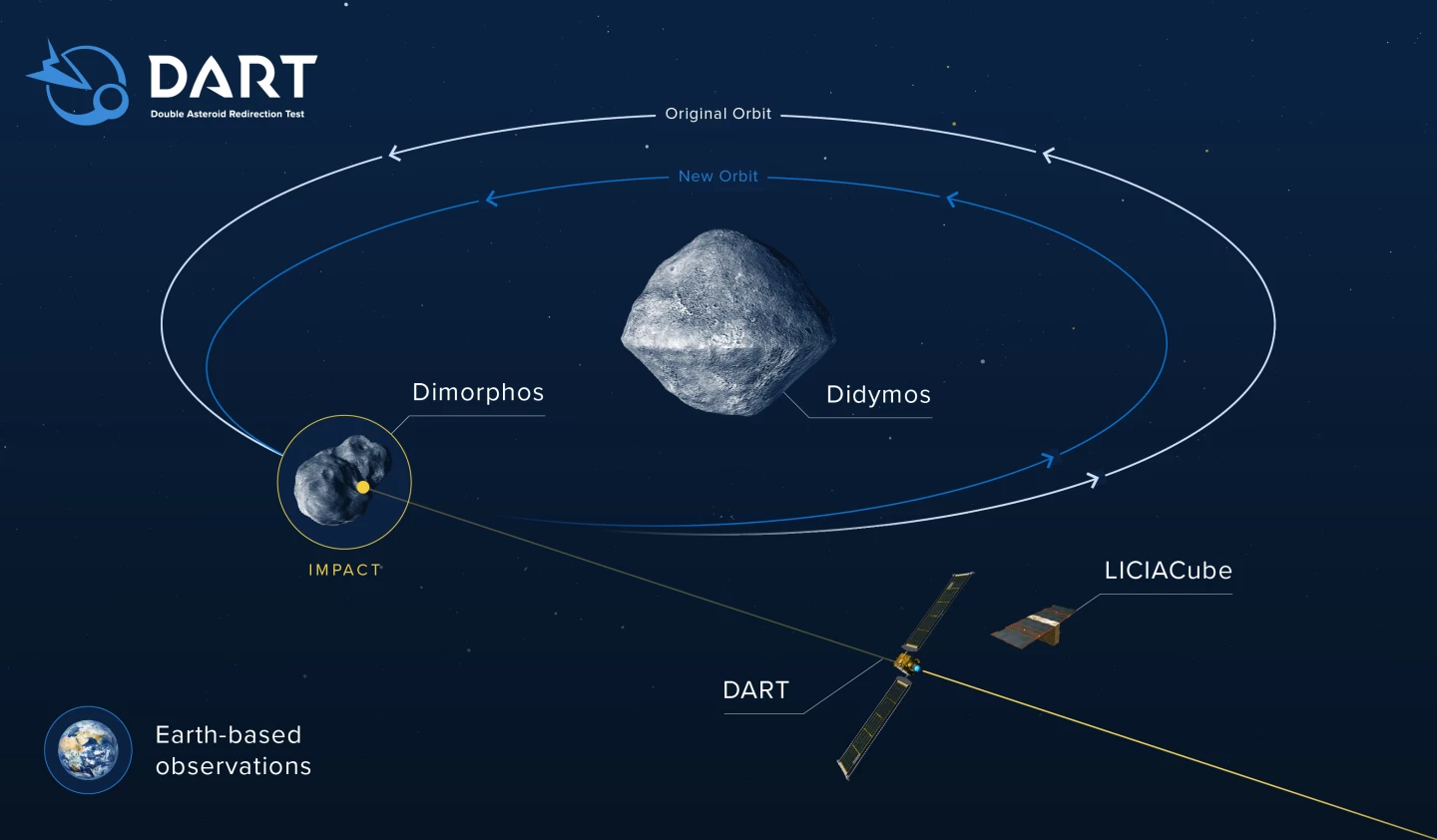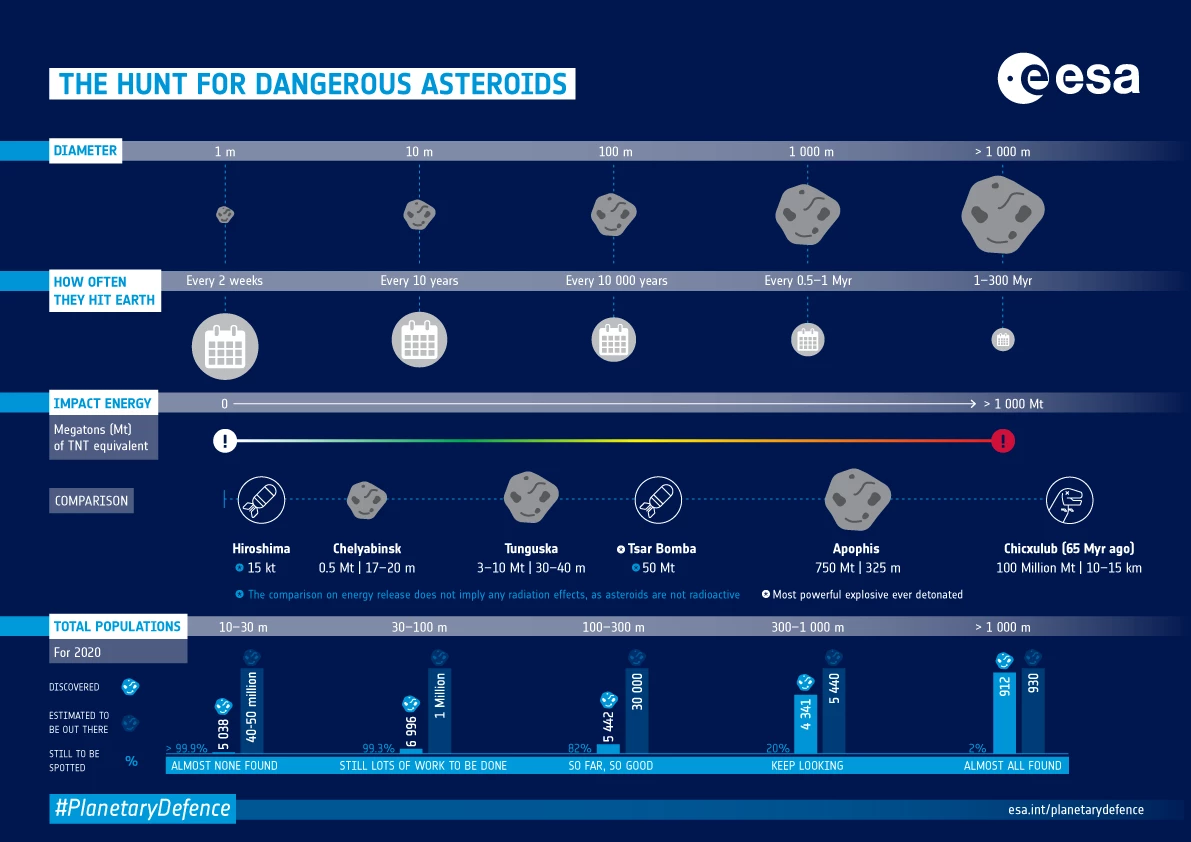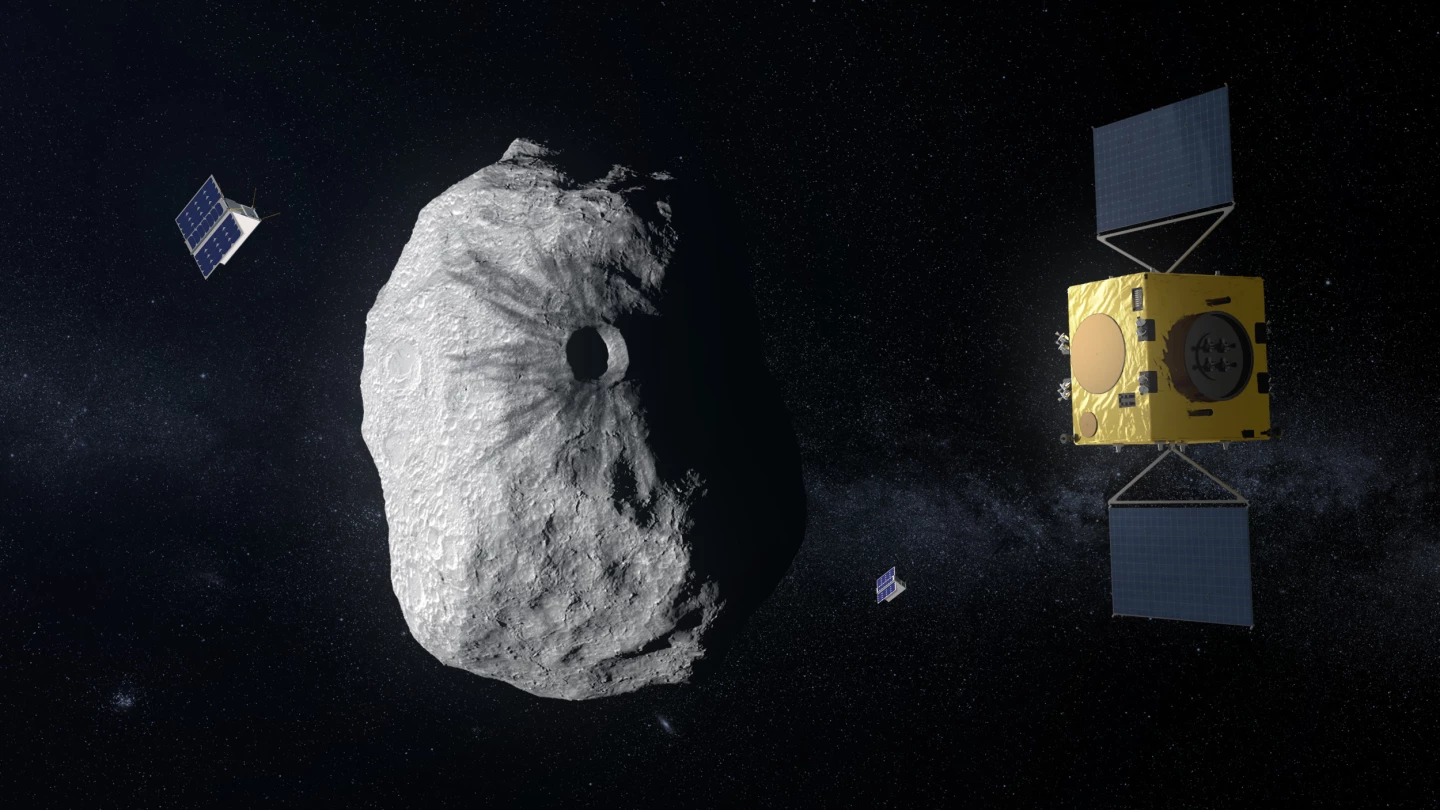It’s the stuff of sci-fi disaster films and doomed dinosaur populations of an ancient past. What do we do if an asteroid is on a collision course with our home planet? One option might be the use of brute force, sending a spacecraft to intervene in the asteroid’s trajectory to simply knock it off course. Today, NASA will explore this possibility with a world-first mission to crash into the asteroid Dimorphos and alter its orbit. We checked in with the team behind this landmark mission to understand some of the mechanics at play.
A rare opportunity

NASA launched its Double Asteroid Redirection Test (DART) mission last November, with a binary asteroid system called Didymos in its sights. The system consists of the larger Didymos asteroid measuring 780 meters (2,500 ft) across, and its smaller sibling, a moon called Dimorphos that has a diameter of 160 m (525 ft) and will be the target of the asteroid-ramming spacecraft.
Dimorphos is far smaller than the kind of asteroid that wiped out the dinosaurs, which is thought to have a diameter of 10 to 15 km (6-9 miles). But it is still the kind of asteroid that could create a sizeable crater and lead to mass casualties if it where to strike the Earth. Importantly, there is no chance of this occurring with Didymos as it's on an entirely different path, but its current proximity to our planet does make it the perfect testbed for the DART mission, as mission scientist Terik Daly from the Johns Hopkins Applied Physics Laboratory explained to New Atlas.

“First, Didymos is a binary asteroid system,” Daly said. “DART will slam into the smaller asteroid, Dimorphos, and change the smaller asteroid’s orbit around the larger one. This makes DART a safe test of this technology because we are not changing the orbit of the larger asteroid around the Sun. Second, the Didymos system is coming close enough to Earth this [Northern Hemisphere] fall – but will not hit Earth – that telescopes on the ground will be able to measure the effects of the DART impact on the orbit of Dimorphos. No known binary asteroids provide a similar opportunity for decades to come.”
Zeroing in
Mission scientists have strategically mapped out the 10-month journey of the DART spacecraft to slam into Dimorphos when it is relatively close to Earth, at a distance of around 11 million km (7 million miles). Currently, the orbital period of Dimorphos around Didymos is 11 hours and 55 minutes. By knocking the moonlet off course, DART is expected to shorten this orbit by several minutes.
As DART closes in on its target at speeds in excess of 22,500 km/h (14,000 mph), the team will have to leave the probe to its own devices during its dying moments. The spacecraft will be guided by the Didymos Reconnaissance and Asteroid Camera for Optical navigation (DRACO) instrument, which will capture images of the asteroid on approach and enable DART to autonomously navigate toward its target in a self-guided spiral into complete obliteration.
Measuring success
Around a fortnight ago, the DART spacecraft deployed a smaller, secondary spacecraft called the Light Italian CubeSat for Imaging Asteroids. This will stand by and act as a mini photographer for the collision event, capturing images of the ejecta cloud and any potential craters on the surface of Dimorphos. Additionally, powerful telescopes stationed all over Earth will be pointed at the binary asteroid system, ready to detect variations in the orbital path.
“Dimorphos will travel along a new path around Didymos after impact than it was before impact,” Daly, who is deputy instrument scientist for DRACO, told us. “Telescopes on the ground will measure that new course by measuring the change in the orbital period of Dimorphos.
Into the unknown
In designing a planetary defense system centered on the idea of knocking an asteroid off course, there is much to consider. In a game of billiards, the speed and angle at which the cue ball strikes a colored ball will determine its path and the success of the shot. In some ways, the DART mission follows a similar principle. But you have to make sure the cue ball is large enough to have the desired impact, as Mark Jensenius, who engineered the guidance system that will steer DART through its dying moments, explained.
“The key to changing the path of Dimorphos is the transfer of linear momentum from the spacecraft to the asteroid,” he told New Atlas. “The transferred linear momentum is the product of the spacecraft mass and the speed at which the spacecraft is traveling relative to Dimorphos when it impacts. Through careful iteration and optimization, the team arrived at a notional spacecraft mass and trajectory that were both feasible and produced the desired linear momentum. Once the geometry of the impact was determined, the rest of the spacecraft design followed.”

While it might seem like simply a matter of a kinetic impact between two objects setting one on a new trajectory, there are other factors at play, and some that are not so well understood. Scientists won’t know how much dust and debris will be kicked up by the impact until after it happens, and they therefore won’t know what impact this will have on the new path of Dimorphos until after it takes shape. In terms of how this technology could help us defend our planet from future asteroids, this may be one of the DART mission's most valuable lessons, according to Justin Atchison, the mission design lead for DART and aerospace engineer at Johns Hopkins Applied Physics Laboratory.
“Instead of kinetic energy, we especially care about the imparted momentum,” Atchison told New Atlas. “That is, how much of DART’s linear momentum will be transferred to Dimorphos’s orbit. The math is well understood, but there is an important unknown parameter in the equations called Beta, which we’re attempting to measure with the post-impact observations. Beta is a measure of how much the impact ejecta affects the total change in momentum imparted to Didymos. This is important because it means that the effective change in Dimorphos’s orbit is amplified. That’s an important parameter to understand because it relates to how well you might expect an operational (hypothetical) kinetic impactor to perform. Many complex models have been used to predict Beta, with wide variations in the results. Among other things, DART will help calibrate those models.”

The DART spacecraft is scheduled to impact with Dimorphous at 7:14 pm, September 26, EDT, with images collected by DRACO to be streamed back to Earth in real time. In addition to post-impact observations from telescopes and the Light Italian CubeSat, the European Space Agency’s Hera mission will launch a probe to the binary asteroid system in 2024 to study the after effects from up close. This could see DART mission translate into a planetary defense technique for future asteroids that come a little too close to home.
More information: Johns Hopkins Applied Physics Laboratory








